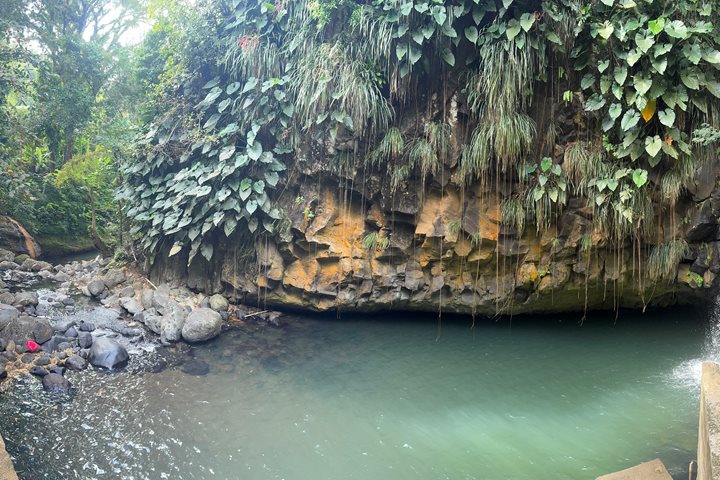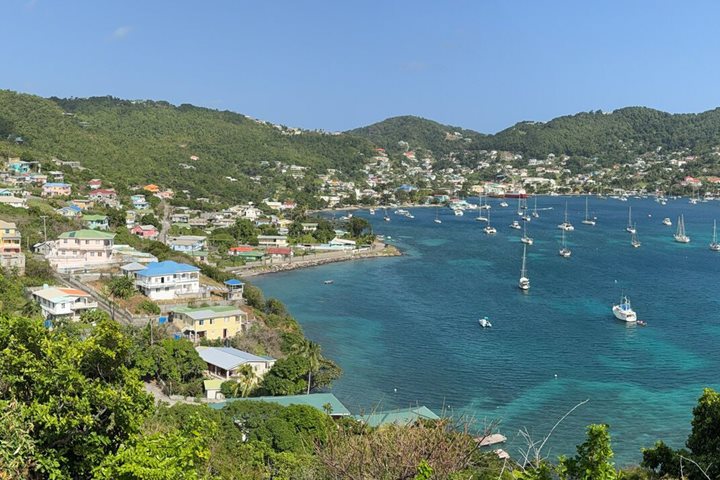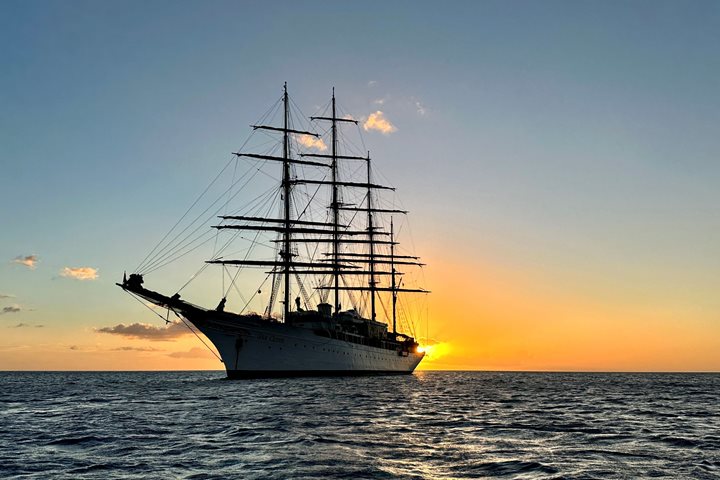The sun cut through the clouds in Martinique at 6:02 a.m. We had a steady wind of some 17 knots off the port bow. Sailors went to sail stations at 9:00. It took nine crew to furl the spanker jib. When that sail gets wind it is difficult to rise. At 9:30 Tom Heffernan gave a lecture on the creole languages of the Antilles, showing how these were unique creations of the collision of European and African, with a small amount of Amer-Indian language words. At 11:00 Ian Strachan and Susan Strubert offered a camera workshop, answering a host of questions and assisting people to use their cameras more effectively. I was standing in the Blue Lagoon when a beautiful 70’ sailboat came abreast of our port side. They shouted “Bonjour”, assuming since we were in St. Lucia that we spoke French. I spied an Irish flag on the boat and replied in Irish shouting “Slainte” and a great shout came form all of them “Cead mille falte” (A thousand welcomes). They were from Dublin! We live in a small world.
At 11:30 the sails were taken in just as we drew abreast of Soufriere Bay and the great St. Lucian “pitons.” We reached our destination of Soufriere in the south west of St. Lucia by noon. The coast of St. Lucia is a rippling series of rugged green hills here in the southwest. Low clouds and grey mist hugged the green hills. After lunch we boarded our tenders for the short motor into the harbor of Soufriere. The town of Soufriere (population 12,000) is situated at the west end of an ancient caldera, which volcano blew the western ridge of the mountain chain away some 39,000 years ago. The wooden architecture is French colonial. Soufriere means “sulphur air” which was evident when we drove inside the great ancient caldera where the smell of sulphur dioxide gas was strong.
At the caldera we could see rising fumes from the boiling cauldron, bubbling mud, molten rock, and sulphric gases. Our guide for the day was the wonderfully voluble Heidi. She is a lifelong native of the area and knows the island lore. We visited at the crater’s edge and had a volcano guide explain the geology. The smell of sulfur was pungent, especially when the wind shifted. We then drove to the Diamond Botanical Garden, a gift to the island by the owners, the Du Boulay family. The Du Boulays received the land from King Louis the XIV in 1713 and the present owner, Joan Devaux du Boulay, is a direct descendant. The garden holds a profusion of tropical plants of every variety from the spectacular heloconias “lobster claws” with their blinding vivid yellows and reds. Heide pointed out the bamboo—the national plant of St. Lucia—which can grow eight inches a day and reach 50 feet tall and six inches in diameter. We were an hour in the garden and after our visit we returned to our vans for the very short drive to the center of Soufriere. Our day was not over as we then went to the lovely Humming Bird Beach, which has good snorkeling, particularly against the sea wall. A young St. Lucian was making fish, grasshoppers, and roses from palm fronds and many guests came back with them.
Shortly after we arrived back on Sea Cloud we had he most wonderful opportunity to motor tantalizing close to the Pitons. I have never been so close. As we bobbed beneath them the galley presented us with refreshingly cold local “Piton” beer and a savory pastry that disappeared rapidly! After tonight’s five star dinner we were treated to our crew singing traditional sea shanties. I should underline that their performance is entirely voluntary. I cannot imagine a more full day and we all went off to bed utterly satisfied. Tomorrow on to Bequia.









